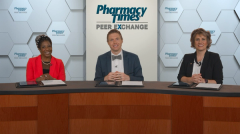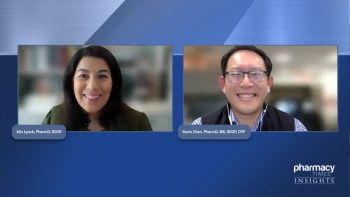
Patient Populations At High Risk for Pneumococcal Disease
High-risk patient populations for pneumococcal pneumonia are discussed by Christina Madison, PharmD, FCCP, AAHIVP.
Episodes in this series

Ryan Haumschild, PharmD, MS, MBA: Another thing you touched on was the importance of getting ahead of this disease. I know that as we’re evaluating all of our patients, certain patients may stand out as more high risk.Dr Madison, I’m going to turn to you for your input on this. Who are the high-risk populations that might develop an invasive pneumococcal disease and what is the rationale for why they’re at more risk for more of a severe infection?
Christina Madison, PharmD, FCCP, AAHIVP: Such an excellent point. I just want to also echo the sentiment from Dr [William] Schaffner that before we had the coverage with the previous versions of the vaccine, and actually before PCV13 [pneumococcal conjugate vaccine 13], we had PCV7 and we were protecting the children in order to protect the adults. So you go after the vector, which is small children, and then hopefully that protects the adults. But we know we needed to do more. I’m just so excited to really dive in deeper when we talk about these vaccine recommendations of really why we need them. And part of it is because there are so many different people that are really at risk for invasive pneumococcal disease. Obviously, the first one we know is our elderly population. Individuals 65 and older, are indicated to receive one of the pneumococcal vaccinations, and we’ll talk about the specifics of that later. And then also anyone who is 19 years and older who has a chronic medical condition that puts them at risk for invasive pneumococcal disease. And usually, it’s more than one before we would indicate the vaccination for them. So some of those individuals could be someone who’s immunocompromised, someone who is HIV-positive regardless of CD4 count, or someone with asplenia or complement deficiency. Anyone with end-stage renal disease or is currently receiving hemodialysis. Anyone with heart or lung disease, we talked about this before, cardiovascular disease is so prevalent in our population right now as we see more people with obesity, as well as diabetes, which is also a risk factor. Also, alcoholism, and last but not least, chronic liver disease.
Ryan Haumschild, PharmD, MS, MBA: You hit on a lot of comorbidities that I think are seen across many different populations right now. I think we’re seeing it, especially in the aging population and it’s something that we need to focus on. We need to see that whole patient. How does that comorbidity increase that risk? And how are we using some sort of risk stratification to have better-targeted education? But the question remains, and I know that you think about this a lot as well, is how can we improve the inadequate vaccine uptake rates among these patient populations and specifically in the historically marginalized populations?
Christina Madison, PharmD, FCCP, AAHIVP: First and foremost, engaging with our physician and nurse colleagues, talking about how we can implement vaccine programming within and embedded in primary care clinics, as well as directing people to health departments and, of course, while we’re all here, pharmacies. I think looking outside of that normal place that we think of, and then really just making it super easy for people to access vaccinations. So part of what I do on a daily basis is think about this equitable. Are we practicing health equity when we’re providing these vaccine services? Are we meeting people where they are? Are we providing them with services that are not, despot but are combined? So not missing that opportunity to vaccinate because maybe they came in asking for a vaccine, but maybe they need more than that to stay up to date. So doing a deep dive and really doing that vaccine forecasting at the time, and then telling them what potential vaccines they may need in the future and developing that rapport so they know you can come back to your friendly pharmacist, or if I am at a primary care clinic, that those vaccine services will be offered in clinic so I don’t have to go somewhere else to get those services. Because, again, I have no idea whether or not they had to take 1, 2, maybe 4 buses to get to my appointment that day. They may also be struggling with housing insecurity or food insecurity. So we just really need to take a holistic approach, especially in those historically marginalized populations. So meeting them where they are, making sure that we’re doing that deep dive, and offering them as many services as we can all in 1 place.
Ryan Haumschild, PharmD, MS, MBA: I love how you teased out the social determinants of health because we’re focused on so many populations, but especially those, that could be susceptible to pneumococcal vaccinations and infections. We need to make sure we’re getting in front of them. We’re looking at transportation vulnerability. We’re working up the patient. We’re making sure that they have access in the local community and sometimes they don’t have to travel to an academic center just to make sure they receive their vaccinations. Those are such great points.
Transcript edited for clarity.
Newsletter
Stay informed on drug updates, treatment guidelines, and pharmacy practice trends—subscribe to Pharmacy Times for weekly clinical insights.









































































































































































































